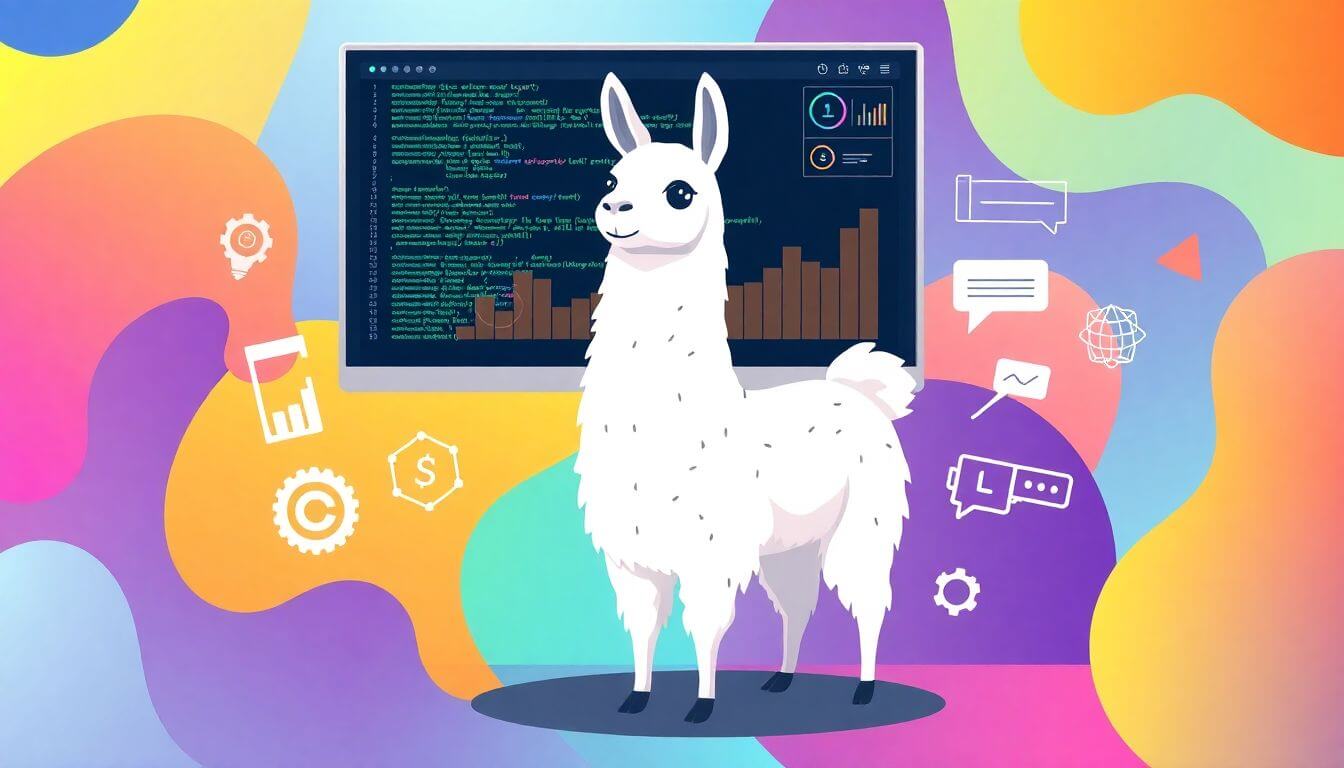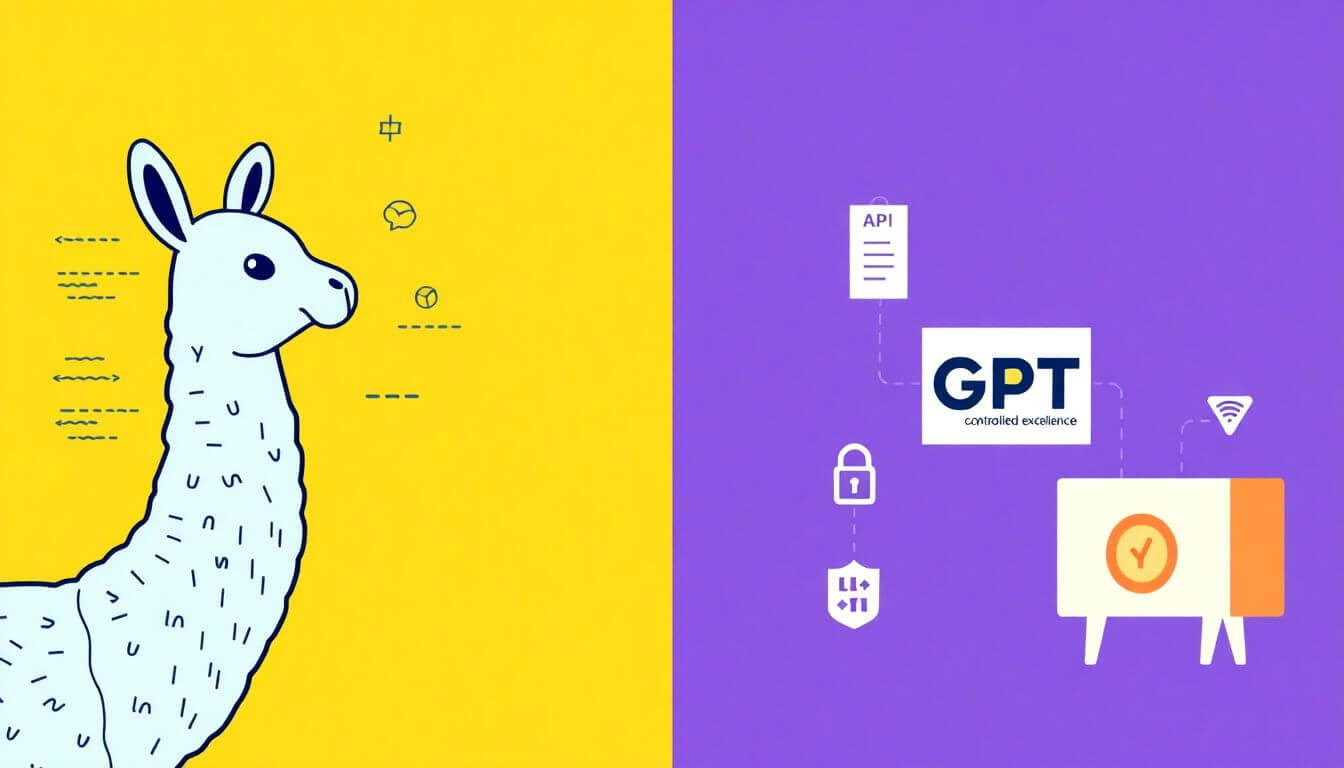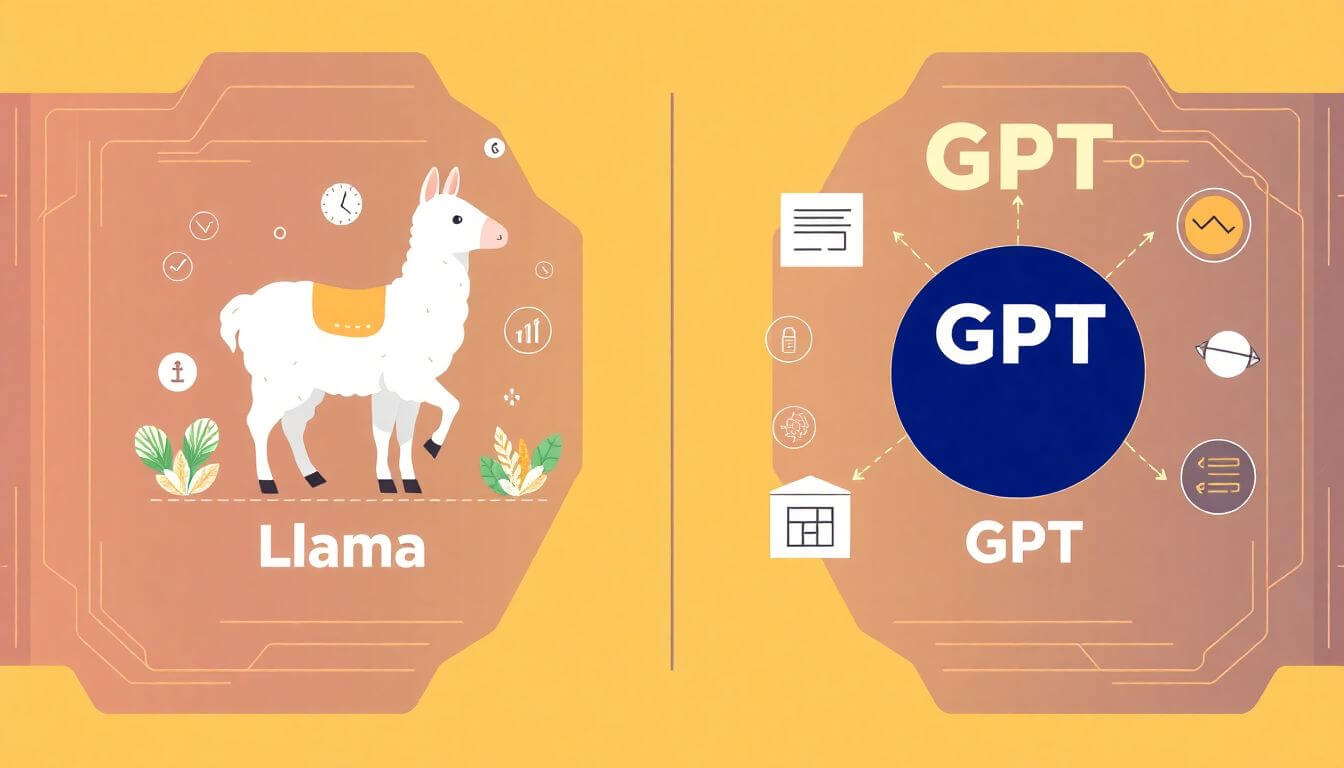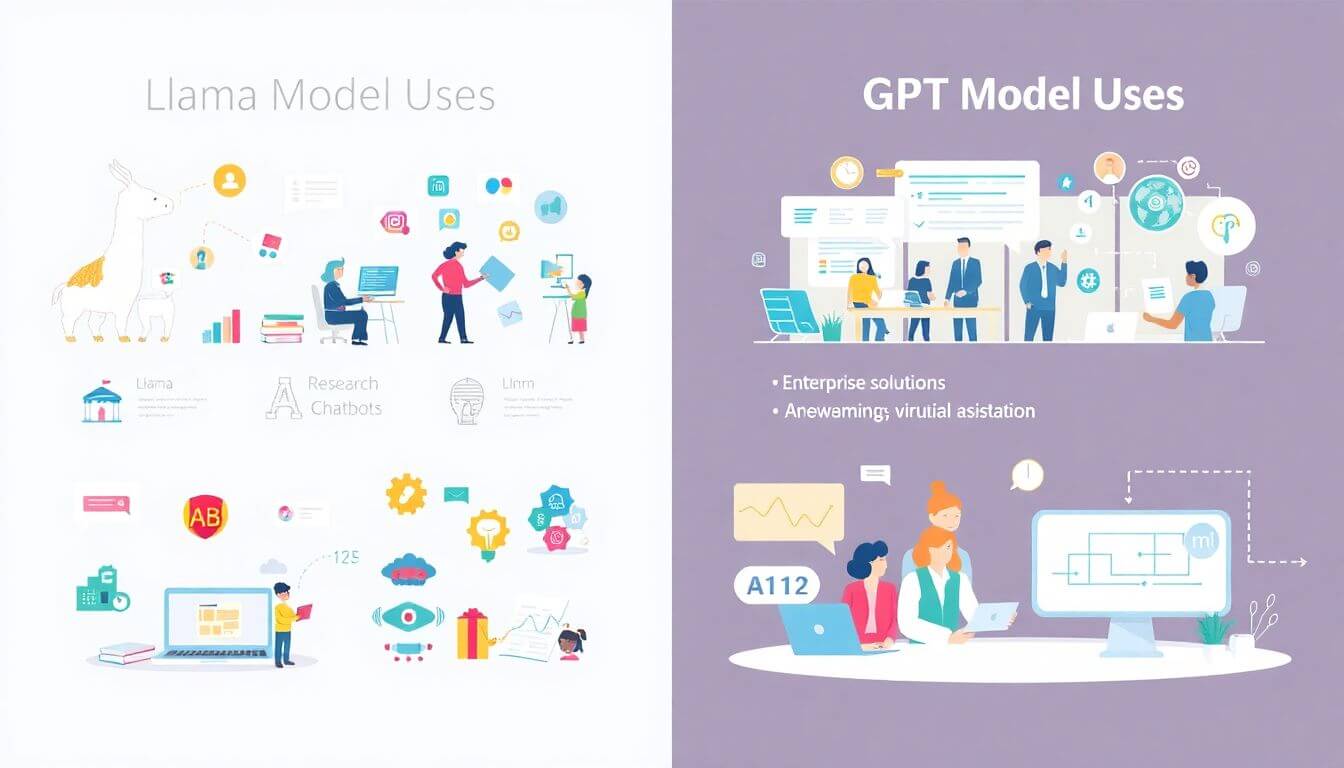Llama Vs. Gpt- A Comprehensive Guide To Open-source And Closed-source Ai Development

Artificial intelligence (AI) is at the forefront of technological advancements, with large language models (LLMs) playing a pivotal role in shaping how machines understand and process human language. Among the numerous LLMs, OpenAI's GPT series and Meta's Llama models stand out as leading contenders. This blog dives deep into the world of AI development, comparing these two powerhouses—GPT and Llama—through the lens of open-source and closed-source frameworks. Along the way, we'll explore key aspects of both models, including architecture, use cases, performance, and commercial applications.
Language models are pivotal in the development of AI systems capable of understanding and generating human-like text. Meta’s Llama and OpenAI’s GPT represent two contrasting approaches to developing large language models (LLMs): open-source and closed-source. Here, we dive deep into the architecture, goals, and underlying philosophies of these models.
What is the Llama LLM?

Llama (short for Large Language Model Meta AI) is an open-source series of LLMs created by Meta (formerly Facebook). It was introduced as a direct response to the dominance of proprietary models like OpenAI's GPT series. The goal of the Llama series is to democratize access to cutting-edge AI by making powerful tools available to researchers, developers, and businesses without the constraints of proprietary licenses.
Key Features of Llama
-
Open-Source Accessibility:
- Unlike closed-source models, Llama provides complete access to its model weights and architecture. This makes it a highly flexible tool for experimentation, research, and tailored applications.
- Developers can fine-tune the model for specific use cases, modify its architecture, or even retrain it with custom datasets.
-
Lightweight and Efficient:
- Llama is designed with a focus on parameter efficiency, meaning it can achieve high performance with fewer computational resources compared to some of its competitors.
- This design makes Llama especially attractive for organizations with limited budgets or computing power.
-
Scalability:
- Llama comes in various sizes, allowing developers to choose a model size based on their specific needs. Smaller models are suitable for lightweight tasks, while larger ones handle complex text generation or analysis.
-
Community and Collaboration:
- By being open-source, Llama fosters a vibrant community of developers and researchers who contribute to its ecosystem, enhancing its capabilities and broadening its applications.
Evolution of Llama
The Llama model series has gone through iterations that enhance its usability and performance:
- Llama 1: The initial release, which gained attention for its open-source nature and competitive performance.
- Llama 2: A significant upgrade over Llama 1, offering improved accuracy, larger context windows, and parameter sizes. It also includes more advanced fine-tuning capabilities and increased robustness for deployment in production environments.
Llama's Applications
- Research: Llama is widely used in academic and corporate research to experiment with large language models without financial or licensing barriers.
- Custom AI Solutions: Companies use Llama to build chatbots, automate content generation, and analyze data in niche markets.
- Educational Use: Programming geeks and AI enthusiasts often turn to Llama as a learning tool to explore the inner workings of AI systems.
Why Llama Matters
The Llama series is a cornerstone in the open-source AI movement. It allows developers and researchers to work with advanced LLMs without relying on costly proprietary systems. By embracing transparency and collaboration, Llama represents a shift toward more inclusive AI development.
What is GPT?

GPT (short for Generative Pre-trained Transformer) is a proprietary LLM developed by OpenAI. Renowned for its state-of-the-art natural language processing capabilities, GPT has set benchmarks in AI performance. However, it operates within a closed-source framework, which means developers do not have direct access to its underlying architecture or training data.
Key Features of GPT
-
Unparalleled Language Understanding:
- GPT excels in tasks that require a deep understanding of language, including answering questions, summarizing text, generating code, and engaging in conversational dialogues.
-
Transformer Architecture:
- GPT is based on the transformer architecture, which enables efficient parallel processing of text inputs and outputs. Its deep and wide layers allow it to model complex patterns in human language.
-
Massive Training Dataset:
- GPT models are trained on vast datasets that encompass diverse topics, ensuring a broad understanding of language and context.
-
Performance at Scale:
- GPT models, particularly GPT-4, leverage billions of parameters to deliver exceptional performance, especially in commercial applications.
-
Accessible API:
- While the model itself is closed-source, OpenAI provides API access, allowing developers to integrate GPT into applications. This approach ensures control over usage while still enabling developers to benefit from its capabilities.
Evolution of GPT
The GPT series has seen significant advancements with each iteration:
- GPT-3: A widely acclaimed model that demonstrated the potential of large-scale LLMs in generating coherent and contextually relevant text.
- GPT-3.5: A refined version of GPT-3 with enhanced performance and better fine-tuning options.
- GPT-4: The latest and most advanced model, offering a broader context window, superior reasoning abilities, and multilingual support.
GPT's Applications
- Enterprise Solutions: GPT powers chatbots, customer support systems, and content generation platforms for businesses worldwide.
- Creative Tasks: It is widely used for generating stories, scripts, and creative writing pieces.
- Coding Assistance: Tools like GitHub Copilot, based on GPT, revolutionize how programming geeks write and debug code.
Why GPT Matters
GPT represents the pinnacle of closed-source AI, offering unmatched reliability and scalability. Its proprietary nature ensures tight control over its deployment, making it the preferred choice for businesses requiring robust and secure AI systems.
Llama vs. GPT: Philosophical Divide

The fundamental difference between Llama and GPT lies in their development philosophies:
- Llama embraces openness, aiming to empower developers and researchers with free access to powerful AI tools.
- GPT focuses on controlled excellence, ensuring high-quality performance at the cost of flexibility and accessibility.
Both approaches have their merits and cater to different audiences. Llama appeals to the programming geeks and researchers who value transparency and collaboration, while GPT is a go-to for enterprises seeking ready-to-use, high-performance solutions.
By understanding these foundational aspects of Llama and GPT, developers can make informed decisions on which model aligns best with their goals and resources.
Llama AI: An Overview of Open-Source Development
Meta's Llama: A Commitment to Open Source
Meta introduced the Llama series as an open-source alternative to proprietary models. This approach allows researchers and developers to access the model's weights, architecture, and training data, fostering innovation and transparency. The Llama models are designed to be highly adaptable, making them ideal for various applications, from chatbots to academic research.
For more information on open-source development, visit Open Source Initiative.
Llama Model Architecture
The Llama large language model leverages a transformer-based architecture, optimized for both speed and accuracy. Key features of the Llama model architecture include:
- Parameter Efficiency: Llama models achieve competitive performance with fewer parameters compared to GPT.
- Scalability: The Llama model size ranges from compact versions for lightweight applications to larger models for complex tasks.
- Customization: Developers can fine-tune Llama models for specific use cases, such as natural language processing, code generation, and sentiment analysis.
Llama Model Versions
Meta has released several versions of the Llama model, with Llama 2 AI being the most recent update. Each version builds upon its predecessor, improving performance, context window size, and commercial viability.
- Llama 2 Model Sizes: Llama 2 offers multiple parameter sizes to cater to diverse computational needs, from research to deployment.
- Llama 2 Context Window: An extended context window enables the model to handle longer inputs effectively, making it suitable for detailed analysis and content creation.
GPT: The Pinnacle of Closed-Source AI
OpenAI's Closed-Source Ecosystem
OpenAI's GPT series, including GPT-3.5 and GPT-4, epitomizes the power of proprietary AI systems. While these models offer unmatched performance, their closed-source nature limits developer flexibility. Access to GPT models is primarily through APIs, requiring adherence to OpenAI's licensing and pricing structures.
For further details about OpenAI and its models, visit OpenAI Official Site.
GPT Model Architecture
GPT models employ a transformer-based architecture similar to Llama but on a much larger scale. GPT-4, for instance, boasts billions of parameters, enabling it to deliver unparalleled language understanding and generation capabilities.
Key Features of GPT Models
- Versatility: GPT models excel in a wide range of tasks, from answering questions to generating code.
- Fine-Tuning: Although developers cannot modify the core model, OpenAI offers tools for fine-tuning GPT for specific applications.
- Commercial Applications: GPT's closed-source nature makes it ideal for enterprise-grade applications requiring robust support and security.
Llama vs. GPT: Key Comparisons

When discussing Llama (developed by Meta) and GPT (developed by OpenAI), it’s essential to understand how these models differ in terms of philosophy, accessibility, customization, and performance. Both are large language models (LLMs) designed to understand and generate human-like text, but their development strategies and applications diverge significantly. Let’s break this down in detail:
1. Open Source vs. Closed Source
Llama: Open Source Approach
Meta's Llama (Large Language Model Meta AI) is notable for its open-source availability. This means:
- Developers have full access to the model's architecture and underlying code.
- You can inspect, modify, and deploy Llama models without restrictions.
- Open-source fosters a community-driven ecosystem where researchers and developers collaborate, innovate, and improve the model.
Why it Matters:
- Open-source encourages transparency, allowing users to understand how the model operates.
- It democratizes AI development, making powerful LLMs accessible to more individuals and organizations.
GPT: Closed Source Philosophy
OpenAI's GPT (Generative Pre-trained Transformer) follows a closed-source model, meaning:
- The architecture, weights, and core functionalities are proprietary and not shared publicly.
- Users interact with GPT models primarily through APIs provided by OpenAI.
- This approach focuses on maintaining control over the model’s deployment and monetization.
Why it Matters:
- While closed-source ensures quality and security, it limits the ability of developers to deeply customize or extend the model's capabilities.
2. Accessibility
Llama: Freely Available
Llama is free to use, making it especially attractive to:
- Startups with tight budgets.
- Independent researchers who want to experiment without financial constraints.
- Educational institutions seeking cost-effective AI solutions.
Meta’s strategy of offering Llama at no cost provides a competitive alternative to premium LLMs like GPT-4.
GPT: Subscription-Based Access
OpenAI's GPT models are accessible through paid subscriptions or usage-based pricing. For instance:
- GPT-4 API access requires a payment plan.
- ChatGPT offers a free tier but limits users to GPT-3.5, reserving GPT-4 for paid subscribers.
Key Drawbacks:
- Small-scale projects or individuals with limited resources may find GPT financially challenging.
- The pricing structure can make large-scale experimentation costly.
3. Customization
Llama: Complete Flexibility
Since Llama is open-source:
- Developers can modify the model to meet specific requirements, such as adapting it for niche industries or embedding it into unique software ecosystems.
- This flexibility is particularly advantageous for businesses needing tailored AI solutions that align perfectly with their operations.
Meta’s decision to open-source Llama positions it as a highly customizable tool, especially for technical users comfortable with AI development.
GPT: Limited Customization
GPT, being closed-source, has restricted customization capabilities:
- Developers can fine-tune GPT models only through OpenAI's proprietary ecosystem.
- Fine-tuning is available as a paid feature, requiring access to OpenAI's infrastructure.
Why it’s a Limitation:
- Developers have less control over the model's behavior.
- Customization options are constrained by OpenAI’s policies and pricing, making it less versatile for specialized use cases.
4. Performance
Llama 2: Competitive, Cost-Effective
The latest version, Llama 2, offers substantial improvements in:
- Text generation quality: Its responses are coherent and contextually appropriate for many tasks.
- Cost-efficiency: It provides good performance without the high subscription costs associated with proprietary models.
- Adaptability: Llama 2 is particularly useful for organizations that value transparency and control over the model.
However, Llama 2 may not outperform GPT-4 in every scenario, especially for:
- Highly complex tasks requiring nuanced understanding.
- Applications requiring ultra-high accuracy in specialized domains.
GPT-4: The Gold Standard
GPT-4 continues to lead in:
- Natural language processing (NLP) tasks: GPT-4 excels in tasks like summarization, translation, and code generation.
- Accuracy and fluency: Its responses are generally more refined and contextually accurate.
- Domain expertise: GPT-4 has a more extensive training dataset, enabling it to handle broader queries with a higher level of sophistication.
Key Insights:
- For high-stakes use cases where precision is critical (e.g., medical, legal, or technical fields), GPT-4 often delivers better results.
- However, for general-purpose use or cost-sensitive projects, Llama 2 provides a viable alternative.
Key Takeaways
- Llama empowers developers with freedom and flexibility, making it ideal for startups, small businesses, and researchers who value customization and cost-effectiveness.
- GPT is a powerhouse for premium quality and advanced tasks, but its closed-source nature and pricing may deter smaller-scale users.
- For small businesses and startups, Prateeksha Web Design recommends evaluating project-specific needs before choosing between these models. With expertise in integrating AI technologies, Prateeksha Web Design can guide businesses in selecting and deploying the most suitable AI solution.
Whether you opt for Llama's open-source adaptability or GPT's unmatched sophistication, the right choice depends on your budget, project complexity, and the level of control you need over the model.
Use Cases and Applications

Llama Model Uses
- Academic Research: Llama's open-source framework is ideal for conducting AI research without licensing restrictions.
- Chatbots and Virtual Assistants: The Llama application extends to creating conversational agents with customizable behavior.
- Programming Geeks Projects: For programming geeks and developers, Llama provides a playground for experimenting with AI technologies.
GPT Model Uses
- Enterprise Solutions: GPT's robustness makes it suitable for large-scale deployments, such as customer support and content creation.
- AI-Powered Tools: From virtual assistants to coding companions, GPT powers numerous AI tools across industries.
Future Prospects: Llama 3 vs. GPT-4

The competition between Meta's Llama and OpenAI's GPT is far from over. With the potential release of Llama 3, Meta aims to close the performance gap with GPT-4, offering improved scalability and efficiency. Key questions for the future include:
- Does Llama have similar tools as OpenAI? While Llama lacks some of GPT's integrated tools, its open-source nature encourages third-party development.
- Free Alternative to GPT-4: Llama continues to position itself as a cost-effective alternative to GPT for developers seeking open-source solutions.
Conclusion
The choice between Llama and GPT boils down to the specific needs of developers and organizations. For those prioritizing transparency, customization, and affordability, Llama.ai and its open-source framework offer a compelling solution. On the other hand, GPT's unmatched performance and enterprise-grade support make it the preferred choice for commercial applications.
Whether you're a programming geek exploring new AI frontiers or a business leader seeking to leverage the latest in AI technology, understanding the strengths and limitations of Llama and GPT is crucial. As these models continue to evolve, they promise to redefine the landscape of AI development, offering innovative solutions for diverse challenges.
In the battle of Llama vs. GPT, the real winner is the AI community, which stands to benefit from the relentless pursuit of excellence in both open-source and closed-source paradigms.
Interested in learning more? Contact us today..
FAQs
-
What are the primary differences between Llama and GPT? Llama is an open-source large language model developed by Meta, aimed at providing accessible AI tools for developers and researchers. In contrast, GPT, created by OpenAI, is a closed-source model known for its high performance and commercial applications, available primarily through paid API access.
-
Can I customize Llama and GPT models? Yes, Llama's open-source nature allows for extensive customization, enabling developers to modify and fine-tune the model for specific use cases. On the other hand, GPT offers limited customization options, where developers can only fine-tune within OpenAI’s framework and typically need to pay for this service.
-
What are the use cases for Llama and GPT? Llama is commonly used for academic research, developing chatbots, and as a learning tool for AI enthusiasts. GPT, however, is widely utilized in enterprise solutions, content generation, customer support systems, and creative tasks like writing and coding assistance.
-
What are the performance implications of using Llama vs. GPT? While Llama provides competitive performance at a lower cost and is effective for general tasks, GPT (especially GPT-4) is recognized for its superior language processing capabilities, making it more suitable for complex tasks requiring high accuracy and fluency.
-
How do the access models impact the choice between Llama and GPT? Llama is freely available, making it an attractive option for startups and researchers, whereas GPT operates on a subscription or usage-based model, which may present financial challenges for smaller developers or companies looking for budget-friendly solutions.
